FOXBOROUGH, Mass. — The Massachusetts Bay Transportation Authority will begin an 11-month pilot program of commuter rail service to Foxborough following approval Wednesday by the town board of selectmen.
The Foxborough Patch website reports that service will begin May 20, with seven trains per day between the community and Boston’s South Station — three in the morning, one in the afternoon, and three at night.
The service from the Gillette Stadium station was approved by the MBTA financial control board, but in the interim, the town had to address resident concerns over noise, trains blocking grade crossings, and overnight train storage. The agreement does not allow trains to be parked in Foxborough overnight.
Foxborough currently is served by the MBTA only on New England Patriots game days and for major concerts at Gillette Stadium.





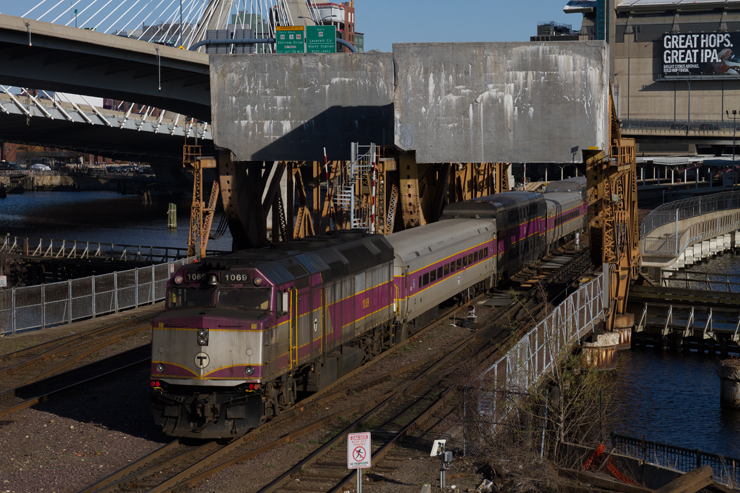

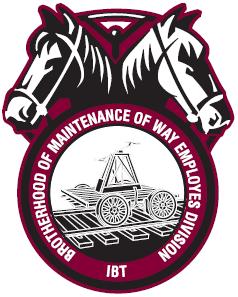
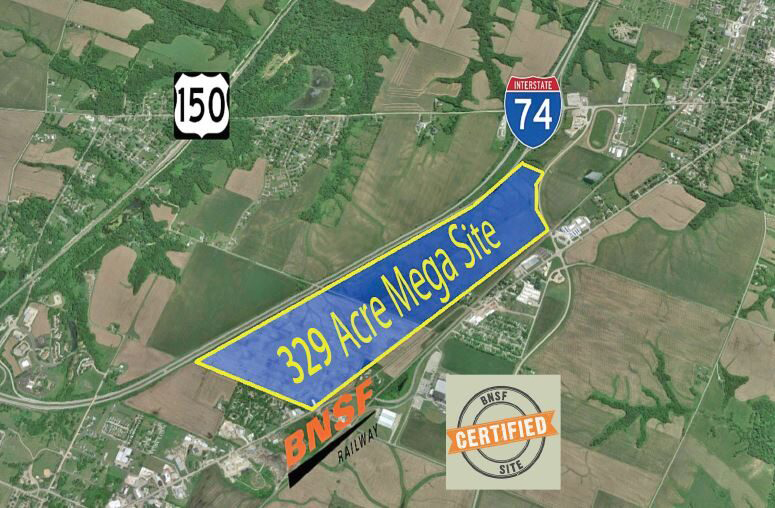
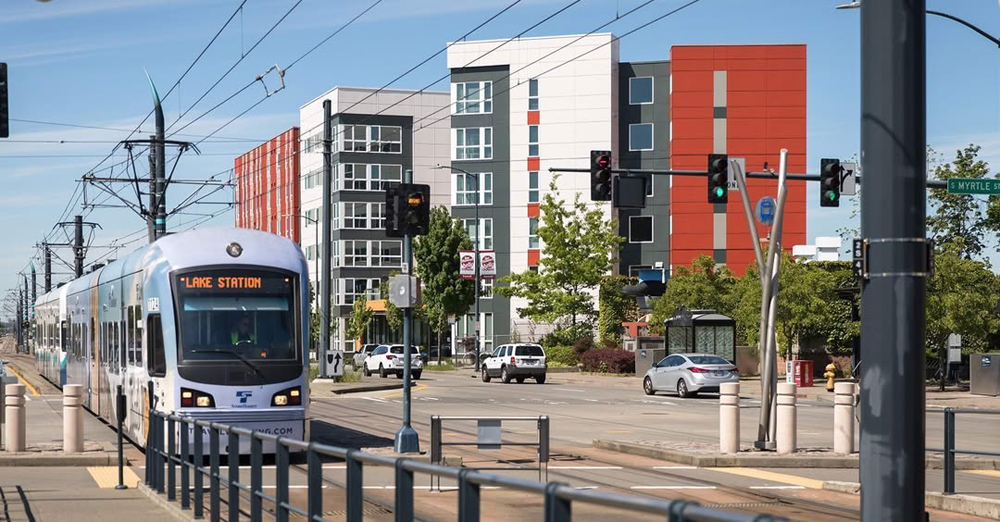
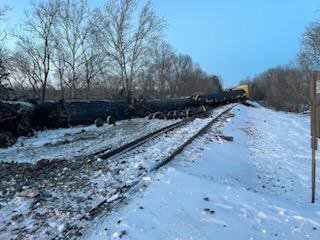




Robert, my understanding is that the MBTA is NOT paying for this service, the local town(s) are. That is the typical funding formula for MBTA commuter rail: paid for by the towns. The state funds system-wide costs.
It is true, as others have mentioned, that the trains are full (in rush hour – and have decent off-peak ridership too) and traffic is congested with no room for more.
Robert’s larger point about the finances has merit. Fixing that would mean adjusting staffing and fares and the state has made choices in the past to favor unions and riders over taxpayers at large. In part because the large positive benefits of commuter rail (for example, increased property values and large economic benefit) are widespread and lift the whole region up.
Suggesting shorter lines with huge park – and-ride lots indicates you are probably not from here. Traffic in the suburbs around Boston is simply horrific; the towns with direct train service benefit greatly, and many have seen a growth of apartment/condo blocks near the stations. Expecting people to crawl miles through local traffic to a station is a recipie for disaster. A LOT of people walk to stations.
Those of us who cannot use the trains – because it is a hub-and-spoke system, and we have suburb-to-suburb commutes suffer badly for it; My 27 mile, all highway commute takes from 60 to 90 minutes. I bicycle whenever I can; it takes about 130 minutes to bicycle, and is absolutely consistent. Attempting to use the trains would leave me 8 miles from my office, waiting for a bus.. and the whole trip would take longer than bicycling.
Charles, my late mother’s family is from the Foxboro-Mansfield area, and my grand parents lived for 40 years 1946-1986 on Mechanic St, in Foxboro, right beside the old town yard (DPW). From 1965 to 1977, I spent a part of every summer visiting them from our home in Maryland. I was born in Norwood Hospital, and my mother graduated from Foxboro High in 1953.
My grandfather worked driving buses for F.M. Perry, former manager of the trolley line, Perry then built the Orpheum theater in 1925 and my grandfather then became a projectionist in the new theater, a job he kept through the Great Depression. He later went to work at the FOXBORO CO. during WWII, and put in 25 years there.
My grandmother worked many years for the Foxboro Reporter.
Norfolk Southern Electric was renamed Norfolk & Bristol Electric in 1902 when the aforementioned Mr. Perry took over as manager. The system covered from Mansfield to Foxboro, on to Walpole out North St. and into Norwood, where it connected with other lines, including one that went to Sharon for about 12 years. There was spurs to Lakeview and Wrentham, and a amusement park on the Lane property in N. Foxboro.
The line’s engineering achievement was bridging the New Haven tracks at North Foxboro with a 467 ft. trestle, built in 1906 to avoid transferring passengers across the grade crossing to another trolley, since the technology did not exist to cross at-grade. After 20 years of operation, the trolleys stopped in August, 1919, when workers went on strike.
F.M. Perry then started a bus service, which ran along the same routes as the trolley, through the 1920s, but was done in by the Great Depression, which also ended New Haven passenger service in Foxboro in 1933.
Most of the info above comes from 2 local history books in my possession, one of which is available from Arcadia Publishing. My grandfather would develop into an avid railfan, and eventually carry an early movie camera with the new (1939) Kodachrome movie film. I have only been able to salvage a few feet of the films he took from the 1930s to about 1980.
I’m pretty proud of being from Foxboro, and could bore you for hours about the Fire Department, which is my real field of interest.
BTW, Foxboro population was about 3,200 in 1900, abut 4,100 twenty tears later
ROBERT – Chicago Metra is going broke running fill trains. MBTA is going broke running trains so packed they can’t stop to pick up more passengers. You’re right that something needs to be changed. I can’t, however, get on board with you on cutting lines and making huge park-rides out in the ‘burbs. That would just make a bad situation worse. People driving long distances then queuing to get in or out of a park-ride solves nothing. Run the trains to where people live.
This reminiscing about the old days and what lines went where and what railroad owned them is great but as far as running commuter trains from Boston to Foxboro (other than on game days) is just plain stupid. MBTA cannot pay for what it runs now. Instead of expanding they need to start shedding all of these little branch line commuter jobs and start concentrating on building large park and ride lots near the main lines and running more frequent trains from them. MBTA is broke and probably at the point where it cannot be fixed. Until they get management that has the courage to take back the railroad from the unions and to start cutting back on service to everywhere then there is no hope of ever fixing what they have. I’m so glad i don’t have to deal with that BS. Driving my truck from my suburban home to my suburban job was just ideal.
MR. DISCOVER —- I did a double-take on the name of your trolley line. “Norfolk Southern” in Massachusetts? Foxborough and Walpole are in central or I guess southern Norfolk County. Mansfield is in northwestern Bristol County.
With all respect to the Foxboro Company, the area was not heavily populated in 1899-1919.
I grew up in the area (a neighborhood in Sharon near to both Walpole and Foxborough). I never heard of a trolley line anywhere closer than Boston or Quincy.
TRAINS-MAG obviously doesn’t specialize in electric traction. The little that has been published has not included New England.
Close with sympathy to the family of the late President George H. W. Bush, the last of the four great presidents born in Norfolk County. I wasn’t born in Norfolk County but I spent all my formative years in Sharon or Quincy.
This service really has little to do with Foxborough itself, it’s at the extreme western edge of the town and is actually closer to South Walpole. Should be just called RT1/Gillette Stadium, as that appears to be the closest road access with parking.
The center of Foxborough, which is 3 miles south of this location, has been without any public transportation for many years. In 1911, the New Haven built a handsome new depot at Bird Street, adjacent to the new FOXBORO COMPANY plant which would dominate life in town until the 1990s, when the “Company” would change hands and lessen its presence in the town and the rise of the NFL’s N.E.Patriots would make Foxborough famous worldwide.
The Norfolk Southern electric trolley line ran between Mansfield, Foxboro, and Walpole between 1899-1919, and the buses that replaced them did not last until WWII.
The NH depot saw declining service through the great depression, got scorched when an old factory burned down across the street in 1936, and was gone by 1960.
Freight traffic through Foxboro boomed during WWII, then decline through the last 20 years of New Haven, and then picked up again after the Penn Central moved eastbound freight from the NH Shore Line to the Boston & Albany, using the tracks through Foxboro as a cutoff to southwestern Mass. This change was documented in a April, 1972 TRAINS article about a PC Assistant Track Supervisor, in which the installation of welded rail was mentioned.
The line seemed to quiet down after the Conrail takeover, I recall 4-axle GE’s in CR blue and PC black in 1977.
There seems to be little photography done on this line between Framingham and Mansfield.
Historic Aerials is a good resource to see the decline of the NH branches in this area and how much ROW has been encroached on by the overdevelopment here.
Ed Lecuyer —- MCI Walpole will always be MCI Walpole to me. MCI Walpole was mentioned in the 1973 movie “The Friends of Eddie Coyle”. The audience needed to fill in for themselves what “MCI” stands for. The renaming of MCI Walpole was political because some politician didn’t want a maximum security prison named after his town. Never mind that’s how Massachusetts always names its prisons: MCI Norfolk, MCI Shirley, MCI Concord, etc. Lots of criminals in the Bay State. Apparently MCI f/k/a Walpole is basically on the same plot of land as MCI Norfolk and the former state institution for the disabled at Wrentham.
In my state which is Wisconsin state prisons are named after the county, i.e. the so-called “Sturtevant prison”, adjacent to the Hiawatha’s Sturtevant depot, is actually Racine Correctional.
The tangle of lines through Walpole and north into Norwood is (or was) something to see.
In my post (below) I should have given Scott Hartley’s book “The New Haven Railroad: The Final Decades” as my source. It’s sort of a Bible to this Wisconsin resident.
If I remember correctly, it’s not easy at Walpole to go from the Franklin line to the Mansfield line to go down to Gillette Stadium station. There is no wye track in the proper quadrant, so a train has to see-saw its way through the junction there. The station at this junction is an old gem.
@Charles Landey
MBTA trains from Boston’s South Station to Foxboro will not be using any remnant of the former New Haven/Old Colony “Wrentham Branch” (which is the line you are referring to through Norfolk-Wrentham-Plainville-No. Attleboro-Valley Falls (RI).) Instead the new service to Foxboro Stadium will use the NH Midland Division (ex NY & NE RR) from Readville to Walpole Center, then swing south on the Mansfield-Framingham line to Gillette stadium (crossing the former Wrentham Branch ROW at “Cedar”.)
Fun fact: When a contest was held (circa 1985) to rename “Walpole State Prison” (Massachusetts’ maximum security prison) the name “Cedar Junction” was selected to honor the nearby crossing of the Wrentham Branch and the Mansfield-Foxboro line. The actual “Cedar” location is fairly inaccessible, in the middle of a large swamp.
Fact two: When the Wrentham Branch was in-tact (circa 1890 – until circa 1976 when it was not included in Conrail) the town of Walpole had the distinction of being the only place in America where the town center could not be accessed without crossing over a railroad.
Fact three: The new interlocking at Gillette stadium is named in honor of one Tom Brady. The name of the interlocking is ‘Goat’.
Note that the photo on this Trains NewsWire article shows a train departing Boston’s North Station – which is not easily connected to South Station. Which brings back the point, to which I agree: “that’s Massachusetts for you. Little there makes much sense.”
It’s great to see a commuter line that is increasing service, if only on a trial basis. This service will go along what is left on a branch line through Walpole and Foxborough that formerly want as far south as North Attleborough and into Valley Falls, Rhode Island. The abandoned portion is visible as a dirt path under I-495 in the Wrentham – Norfolk area.
The tangle of existing and abandoned New Haven Railroad (mostly formerly Old Colony Railroad) lines other than the Northeast Corridor (the former Boston and Providence) is a story in and of itself, serving towns and cities such as Framingham, Walpole, Norwood, Medfield, Franklin, etc., to the west of NEC, and Quincy, Braintree, Weymouth, Taunton, Middleborough, Plymouth and the South Coast (New Bedford and Fall River) and Cape Cod east of NEC. What is notable isn’t what is gone but how much is left, given the de-industrialization of this area, and its transformation from mill towns and rural poverty into wealthy suburbs.
More than one railroad passes through Foxborough. Foxborough formerly was served by the isolated East Foxboro station on NEC/ Providence line. This station has disappeared. Heavily used commuter stops at Sharon to the north and Mansfield to the south apparently made East Foxboro redundant.
Foxboro(ough) is spelled with or without the (ough) extension, unlike nearly Attleboro and North Attleborough which each have only one spelling. Whatever, that’s Masasachusetts for you. Little there makes much sense.
Norwood was where my family’s business was, even if there were other rail spurs further down in Walpole. It was called the “Atlantic Properties”, east of Route 1A, west of the rail line. I don’t know what was made there, only that my uncle’s company owned one small building out of several and that there were tracks in some of the alleyways.
Today Norfolk County is considered one of the wealthiest. Especially by those who don’t know of the living and working conditions of World War II veterans in the 1950’s. The stuff my uncle’s company dumped into the Neponset River back then wouldn’t be acceptable in a fourth world nation today.
The business was originally in Boston near South Station. It was torn down around 1953 for the original John Fitzgerald Expressway or “Central Artery”, the site of the later Big Dig. The business split between Norwood and another Boston location. I recall my father saying they wanted to be in New Haven territory, not B+M. As far as I know that was irrelevant because I’m not aware of a single rail shipment, not even back in the 1950’s.
Although I have lived in the United States since 1970 it’s impossible to escape my Massachusetts roots. That could be why I enjoy Brian Solomon’s articles so much, even though Brian is from Western Massachusetts, like Mark Chmura, the late Mark Fidrych, and the late Mark Belanger.
The “decrepit industrial park” was a shingle-manufacturer, if I recall correctly. It was at East Walpole on the Wrentham branch. Service to that park continued into the Conrail era, and the rails south of there lifted and the land sold off. Houses are now on the former ROW in places between East Walpole and Cedar. After that plant closed, the line was truncated further, only leaving a small industrial track that serves a couple of industries. This short industrial track is not noted on the map on pg. 49 of the Nov 2018 issue of Trains.
Oddly enough, my first cab ride (around 1978 when I was 7 or so) was also from the local switch crew at Norwood. Rather than go down the Wrentham branch, we ran to a small scrapyard west of Norwood. I recall the locomotive rocking back and forth and asking the engineer if he was worried about a derailment. “If it goes over, it goes over” was his reply; apt in the post New Haven/Penn Central/early-Conrail era. That spur went out of service not long afterwards – another small casualty of the decline of New England’s once proud industrial heritage.
ED – The Wrentham branch served a decrepit industrial park in Norwood, close to the Walpole town line. One of the buildings was a plant where my father worked and which my uncle owned. I recall an occasional box car serving neighboring industries maybe as “recently” as 1955 to 1957. My older brother talked about hitching a cab ride on a switcher there.
My father and uncle both volunteered playing chess alternating at MCI Walpole and MCI Norfolk. After my aunt died, my uncle took in chess – playing parolees into his own bedroom and gave them work at Norwood. The Reubens – Landey state amateur chess championship to this day is named after the two of them.
As for Wrentham state school, sadly we had family there also.
The reason I assumed the Wrentham branch still open was I couldn’t fathom regular passenger service on the Framingham – Mansfield branch, which is the only other railroad in Foxborough. The map on Page 49 of the November, 2018 TRAINS – MAG clearly shows no Wrentham branch. The opening paragraphs (Page 45) of Brain Solomon’s feature story on New England freight describe the situation all too well.
Although I grew up in central Norfolk County and later lived in eastern Norfolk County, the county’s west end – Norfolk to Bellingham – is the dark side of the moon to me. People in the United States who think that Massachusetts is like Boston or Cambridge haven’t seen Franklin, Millis, Medway or Bellingham.
… Charles N. Landey
Brookfield Township, Wisconsin (home of TRAINS-MAG)
1964 graduate Sharon (Massachusetts) High School
Oh, also @Charles – MCI Walpole, MCI Norfolk, and the Wrentham State School are three very different properties. My childhood home was basically located between the three.
@Charles –
Only a small stub of the Wrentham branch is still active – in Norwood Mass where it branched off the Midland (NY & NE). There is track still down at the other end in Valley Falls, RI, but it is out of service.
The Midland actually crossed the Providence and Worcester at Blackstone, Mass. There was another line that ran from Boston to Woonsocket, RI via Bellingham, MA and on to Slatersville RI, which crossed both the Midland (in Bellingham) and P&W (in Woonsocket.) This stub was considered for possible reactivation if the Midland was used to provide Woonsocket to Boston commuter service, but that plan was abandoned due to cost. Woosocket-Boston commuter rail, if it happens, would be via a connection on the Northeast Corridor via Pawtucket, RI.
FWIW, my dad worked at MCI Walpole/Cedar Junction from 1978~2000. I grew up along the Wrentham branch so I am quite familiar with the area and its lore.
@Ron –
There is a wye segment allowing trains from the Midland/Franklin line to proceed south towards Foxboro/Mansfield at Walpole. (Running right around the historic union station – hey that answers Jim Wrinn’s earlier blog question about any other active stations within a wye.) However, what is not known to me is if this new service will use this wye segment – as I understand it had deteriorated to the point where trains to Foxboro were avoiding it, and instead taking a well-maintained quadrant to head north towards Framingham, then back down to Foxboro.
RON and ED – I was unaware that the Wrentham branch was abandoned as far north as Foxborough. No surprise, it split the difference between the Franklin Branch (“Midland”) and the NEC. The tangle of branches in Norwood and Walpole seemed to textbook definition of “redundant”.
The Midland branch once went to Woonsocket, Rhode Island where it connected to what is now the Providence and Worcester Railroad, which long ago was operated by the New Haven although the New Haven found out they didn’t actually own it..